Celebrity Interviews Posts on Crowch
After her breakout in Fifty Shades of Grey and intense roles in films like Suspiria, Dakota Johnson returns in a fresh and intriguing new feature. In A24’s romantic comedy Materialists, directed by Celine Song, she plays Lucy—a successful New York matchmaker seeking the perfect partner for her client. The plot plunges into a love triangle: Lucy is torn between the wealthy, polished Harry (Pedro Pascal) and the charming yet flawed John (Chris Evans)
This isn't just your typical rom-com. It promises to redefine the genre through subtle commentary on modern dating culture and emotional nuance. The chemistry between Johnson, Evans, and Pascal lends depth, showing Johnson as both charismatic and vulnerable—a sign of her growth toward more mature roles.
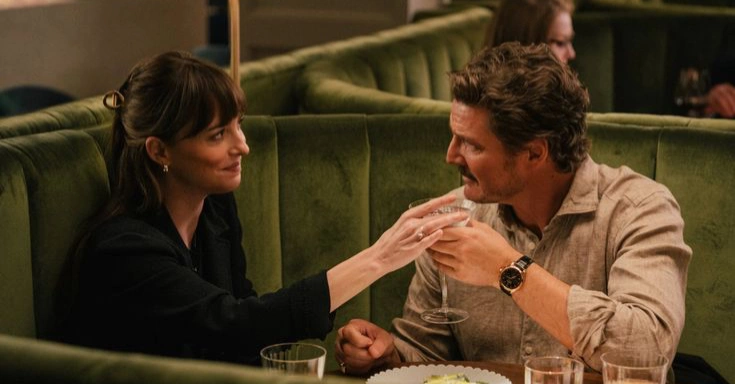
Set against the fast-paced backdrop of contemporary Manhattan, Materialists explores romance, identity, and class through the lens of one woman caught between what she thinks she wants and what her heart truly needs. Lucy, portrayed by Dakota Johnson, is no stranger to love — or at least, to managing it professionally. As one of New York’s most sought-after matchmakers, she prides herself on understanding human behavior, compatibility, and emotional logic. But when her own emotions become entangled in a client's case, the control she’s known begins to slip.
What makes Lucy compelling isn’t her confidence — it’s her quiet internal contradictions. She's smart, capable, and observant, yet beneath her curated image lies someone longing to be chosen not for her poise or insight, but for who she is when she isn’t being useful. Through nuanced writing and Johnson’s layered performance, Lucy becomes a portrait of modern womanhood: self-made and self-aware, yet vulnerable to the timeless confusion of love.
Director Celine Song brings the same emotional precision she demonstrated in Past Lives, infusing every scene with subtext and stillness. In Materialists, romantic tension simmers through microexpressions, offhand remarks, and loaded silences. It’s a film that understands love is rarely loud — it’s felt most deeply in what remains unsaid.
As Lucy becomes emotionally involved with both Harry and John, her own values come into question. Harry offers security, sophistication, and the promise of a carefully constructed life. John, on the other hand, is unpredictable — a failed musician with a messy past, sharp wit, and genuine warmth. What begins as a professional obligation quickly spirals into a personal dilemma, forcing Lucy to confront not just her desires, but her fears.
Dakota Johnson captures this tension with impressive control. Her portrayal is filled with small but resonant choices — a pause before a response, a flicker of doubt mid-smile, or the way she breaks eye contact when emotions feel too raw. Lucy is never reduced to a trope; she’s allowed to be both composed and confused, kind and selfish, certain and overwhelmed.
Visually, the film leans into clean compositions and tactile, lived-in spaces — cafes lit with golden hour sunlight, cluttered apartments with half-written songs, luxury rooftops where silence feels more intimidating than words. This rich visual storytelling enhances Lucy’s internal state, balancing between the glitter of curated perfection and the warmth of imperfection.
The script resists easy conclusions. Rather than choose one man or the other in predictable rom-com fashion, Materialistsleans into ambiguity and growth. Lucy's journey is ultimately less about choosing between two men and more about reclaiming her own voice in a world that often sees women as facilitators of others’ love stories, rather than protagonists of their own.
Supporting performances — including a sharp turn by Greta Lee as Lucy’s best friend and confidante — provide levity and depth, rounding out a world that feels as emotionally real as it is narratively satisfying.
For Dakota Johnson, Materialists signals a new chapter. She sheds past personas and delivers a grounded, emotionally intelligent performance that shows restraint, complexity, and grace. Her Lucy is not an ideal — she’s a person, and that’s what makes her unforgettable.
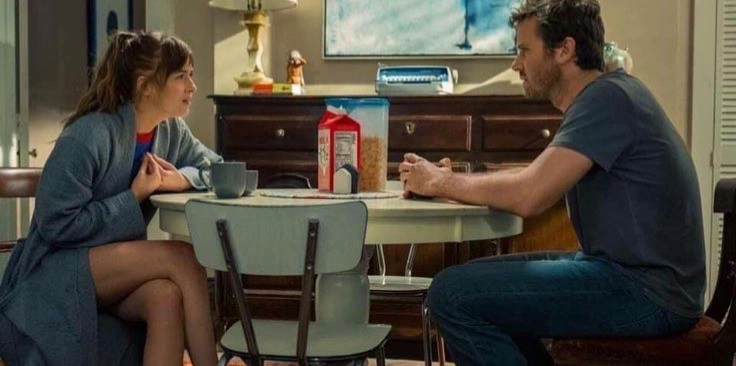
She stood alone, with a sign and a silent urgency in her eyes. In August 2018, 15-year-old Greta Thunberg began her “School Strike for Climate” outside the Swedish Parliament. No one could have predicted that she would become the face of a global youth movement.
Born in 2003, Greta was diagnosed with Asperger’s syndrome at age 11. She describes it not as a disability, but as her “superpower”: it helps her speak with clarity, focus, and moral conviction.
When she learned about the climate crisis, she couldn’t understand why adults ignored the warnings. So she acted. Her solo protest sparked the global Fridays for Future movement, mobilizing millions of young people.
She speaks plainly, but powerfully. Not to insult — but to confront. Not to alarm — but to awaken.
“I don’t want your hope. I want you to panic. I want you to act as if your house is on fire. Because it is.”
Greta has spoken at the EU Parliament, Davos, and the UN Climate Summit. Her viral 2019 UN speech, filled with sorrow and rage, shook the world:
“How dare you? You have stolen my dreams and my childhood with your empty words!”
Her activism is grounded in science. She quotes reports, listens to experts, and demands action — not slogans.
Despite harsh criticism and mockery, Greta remains firm:
“When your critics attack your looks and your autism instead of your arguments, you know you’re winning.”
Greta doesn’t want to be a hero. She wants truth. She reminds us that the future isn’t tomorrow — it’s now, and it’s in our hands.

aterialists immerses viewers in the contradictions of contemporary romance, where curated identities collide with authentic emotion, and love becomes a question not just of the heart — but of value. Lucy, the protagonist at the center of it all, moves through a sleek, shimmering version of New York that feels at once aspirational and hollow. Beneath the designer heels and curated dinner parties is a woman who has spent years helping others find love — without pausing to examine her own.
The film doesn't present Lucy as broken or lost. Instead, it draws a portrait of someone quietly drifting — successful on paper, admired by clients, and envied by peers, yet increasingly unsure of what real connection even looks like. Celine Song allows Lucy’s emotional evolution to unfold with restraint, using mood, silence, and atmosphere instead of exposition. It’s a sophisticated narrative style that mirrors the complexity of real-life relationships: messy, nonlinear, unresolved.
Lucy’s internal world is mirrored by the city around her — a place built on momentum, ambition, and polish. Every scene is charged with aesthetic precision, yet the underlying tension always belongs to the characters. Through subtle shifts in color and composition, Song crafts an emotional language that speaks louder than dialogue. Rainy sidewalks, warm interiors, and lonely subway rides become emotional metaphors for what Lucy can’t always articulate: the desire to be chosen, truly seen, and loved not for what she offers — but for who she is.
Supporting characters provide contrasting perspectives that sharpen the emotional core of Lucy’s journey. Her colleague and closest confidante, played with intelligence by Zoë Chao, challenges her to confront hard truths. A client played by Bowen Yang injects levity and insight, pointing out the absurdities of dating algorithms and emotional branding. Even Lucy’s own mother, seen briefly in flashbacks and a key phone conversation, casts a long emotional shadow — a woman who once told Lucy to “marry someone with direction, not just affection.”
While the story contains elements of traditional romantic comedy — witty banter, longing glances, unexpected reunions — Materialists never settles for clichés. There are no grand airport chases, no over-the-top monologues. Instead, the film builds emotional suspense through micro-moments: hands grazing in passing, eyes searching for reassurance across crowded rooms, a breath held before revealing vulnerability.
One of the film’s most powerful motifs is the question of self-worth — not in the loud, self-help sense, but in quiet choices: staying in a relationship for comfort, confusing admiration with love, and mistaking compatibility for connection. Lucy’s arc is not about being swept off her feet, but about discovering where her feet are planted in the first place.
The score, composed by Emile Mosseri (Minari, The Last Black Man in San Francisco), gently underscores Lucy’s emotional state — alternating between soft piano themes and airy strings, creating an introspective tone that lingers even after the credits roll.
By the time the final act arrives, Materialists has done something remarkable: it invites viewers not to root for one man or the other, but to root for Lucy’s clarity. The film suggests that fulfillment isn’t found in a perfect partner, but in the courage to accept complexity — in others and in ourselves.
This role marks a turning point for Dakota Johnson, allowing her to shed earlier labels and emerge as a performer capable of subtlety, restraint, and gravitas. Her Lucy doesn’t need to be loud to be powerful. She’s smart without being cynical, open without being naive, and emotional without ever losing agency.
Materialists isn’t here to confirm fairytales. It’s here to ask what romance means in a world of transactions, facades, and curated desires — and what’s left when we strip all of that away.
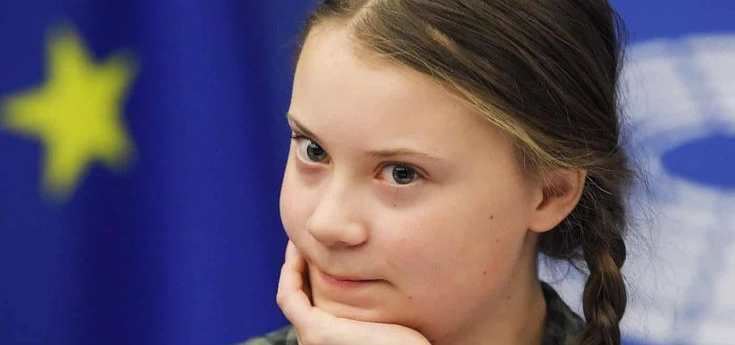
Having captivated audiences as Lucifer, Tom Ellis returns in a brand new mystery drama. In 2025, he stars as Professor Elliot Hayward in Shadow Healer, a medical genius who experiments with supernatural forces.
Elliot is charming, polished, revered — until his extraordinary healing ability reveals its darker underside. The series explores whether scientific boundaries can, or should, be pushed into the realm of the paranormal.
Ellis retains his signature charisma but injects newfound emotional depth into his character. Shadow Healer blends medical intrigue, supernatural suspense, and moral complexity, transforming him into a flawed hero you can’t look away from.
🎥 Why it matters:
- Ellis steps beyond his charming antagonist persona into a morally conflicted protagonist.
- A fresh mix of medical and supernatural drama epitomizes 2025’s evolving TV trends.
- The show explores how far one should go to save a life — and at what cost.
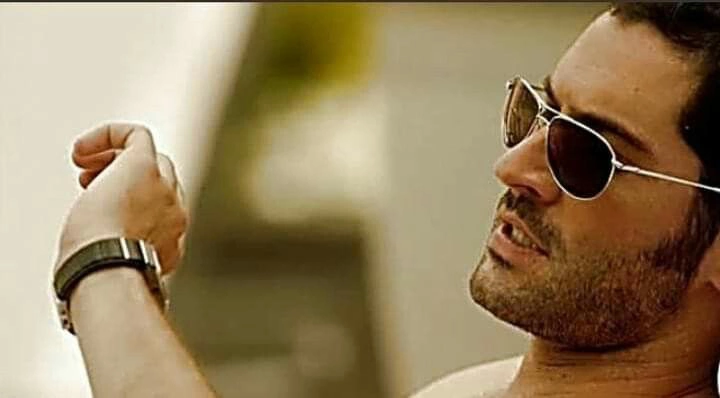
Set in a brooding, neo-Gothic version of London where cobblestone streets meet cutting-edge biotech labs, Shadow Healer weaves a dark and atmospheric narrative that challenges the boundaries between science and the supernatural. Professor Elliot Hayward, played by Tom Ellis, is not just a world-renowned neurologist — he’s a man obsessed with the concept of resurrection, driven by a traumatic past and the unrelenting belief that death is a problem waiting to be solved.
The series kicks off with Elliot pioneering a controversial therapy that seemingly reverses terminal illnesses. His clinic, hailed by the media as revolutionary, becomes the center of global medical debate. But behind closed doors, his treatments don’t just defy biology — they defy reality. As patients begin to exhibit side effects no science can explain — telepathic surges, waking nightmares, voices from beyond — Elliot is forced to confront the possibility that he’s opened a door he cannot close.
The supporting cast deepens the series' emotional resonance. Anika Nair (played by Gugu Mbatha-Raw) is a brilliant psychiatrist and Elliot’s former student, who returns to the clinic when one of her patients begins to speak in a dead language — one that Elliot has heard before. Dr. Marcus Renn, portrayed by Richard Armitage, is a skeptical surgeon and Elliot’s former rival, now pulled into the escalating chaos when his own daughter becomes a patient. Meanwhile, Detective Eva Kessler (played by Vicky Krieps) investigates a string of bizarre deaths tied to the clinic — deaths that appear to mimic ancient rituals, blurring the line between coincidence and curse.
Rather than leaning into jump scares or sci-fi tropes, Shadow Healer opts for psychological suspense and metaphysical ambiguity. Are the manifestations a result of neural misfiring, guilt-ridden hallucinations, or proof of a spiritual realm reacting to Elliot’s manipulations? The show avoids easy answers, instead placing viewers in the same uncertain terrain as its protagonist.
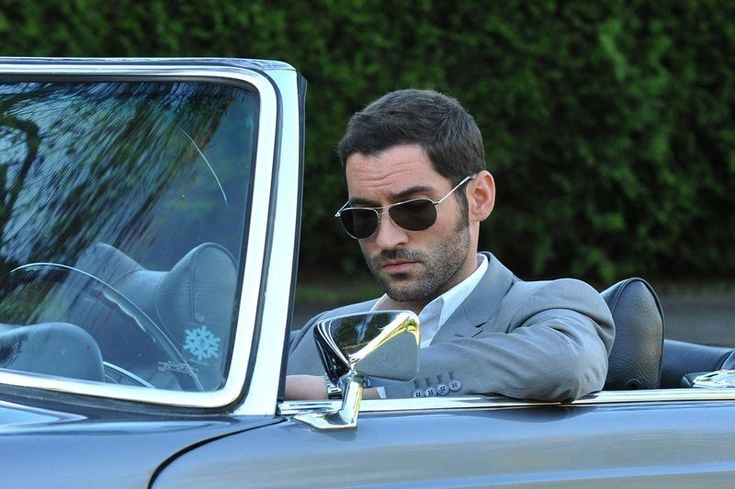
The cinematography uses stark lighting contrasts and narrow focal points, creating a sense of claustrophobia even in open spaces. Hallways feel endless, shadows seem to breathe, and mirrors sometimes reflect more than the characters standing in front of them. A chilling original score composed by Max Richter underscores the emotional and existential weight of every episode.
Narratively, Shadow Healer unfolds like a layered mystery. Each episode reveals a clue not just to the central phenomenon, but to Elliot’s increasingly fractured psyche. Flashbacks to his childhood, where a devastating loss set him on his obsessive path, are interwoven with present-day ethical dilemmas. The deeper he dives into his research, the more he’s haunted — by his past, his patients, and by the question he refuses to ask out loud: Is he saving lives — or stealing something sacred?
Themes of grief, legacy, ego, and the burden of genius permeate the script. Viewers are invited to wrestle with uncomfortable questions: What defines healing? When does progress become hubris? And if something unnatural grants life — does that life still belong to us?
By the season’s end, Shadow Healer becomes more than a supernatural thriller. It’s a meditation on control, mortality, and the price of playing god in a world where science cannot fully explain the soul.
Tom Ellis commands the screen not as a man with all the answers, but as one tormented by the implications of the questions he's asking. It’s a performance marked by restraint, desperation, and quiet intensity — a reinvention of his screen presence that may become his defining role.
In a world where millions of children are denied basic education, the voice of one girl changed the course of history. Malala Yousafzai, born in the Swat Valley of Pakistan in 1997, understood from a young age how powerful education could be.
When the Taliban took control of her region and banned girls from going to school, Malala, then just a teenager, began to speak out — first anonymously, then openly.
She wrote a blog for the BBC, describing life under Taliban rule: fear, violence, the closing of schools. Her words reached the world — and defied local extremism.
On October 9, 2012, Malala was shot in the head by a Taliban gunman while riding a school bus. She survived — and grew stronger.
After a long recovery in the UK, Malala became a global advocate. She spoke at the UN, met with world leaders, and in 2014, at the age of 17, became the youngest-ever Nobel Peace Prize laureate.
“One child, one teacher, one book, one pen can change the world,” she declared.
Through the Malala Fund, she now supports girls’ education worldwide, especially in areas affected by poverty, war, or gender discrimination.
She continues to fight — not just for access to education, but for the dignity, rights, and futures of millions of girls who need a voice.
Malala Yousafzai's story is not just one of survival — it is one of radical hope, relentless courage, and the refusal to be silenced. Her journey from a rural valley in Pakistan to the global stage has made her a symbol not only for education rights, but also for resilience in the face of extremism and oppression.
What makes Malala’s activism extraordinary is not just the risks she took, but the clarity of her vision at such a young age. Even before the world knew her name, she believed education was not a privilege — it was a right. Her courage wasn’t born from rebellion, but from conviction: that every girl deserves to learn, to lead, and to live with agency.
As her public profile grew, so did the challenges. Threats against her and her family intensified. But Malala never chose hatred as a response. Instead, she spoke with empathy — not just for herself, but for the countless children denied the chance to sit in a classroom, to read freely, to dream beyond traditional roles. She carried not only her story, but theirs.
Malala’s influence extends far beyond speeches and headlines. The Malala Fund, co-founded with her father Ziauddin — an educator who inspired her early on — supports grassroots organizations in countries like Nigeria, Ethiopia, India, Brazil, and Afghanistan. The Fund’s mission is simple but powerful: invest in local education leaders, amplify girls’ voices, and hold governments accountable for policy change.
She also emphasizes the intersectionality of education with other global issues: climate change, refugee crises, racial justice, and digital access. Malala believes that education is not a single cause, but a foundational solution — one that ripples across every social and economic sphere.
A graduate of Oxford University, where she studied Philosophy, Politics, and Economics, Malala continues to bridge activism with academia. She has used her global platform to highlight how cultural traditions, poverty, and conflict disproportionately affect girls. Her campaigns challenge not only policies but perceptions — working to shift how the world sees young women and how young women see themselves.
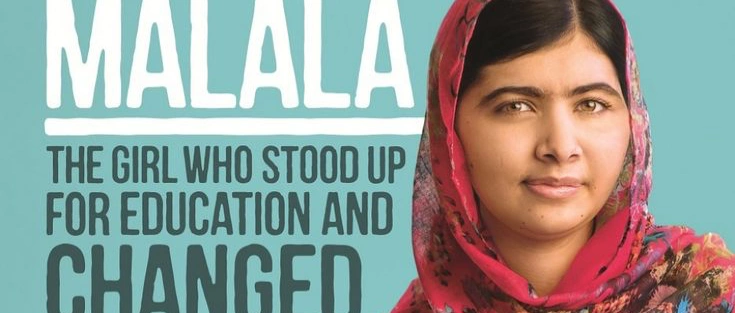
In interviews and writings, she often reminds audiences that she is still learning, still growing. This humility — coupled with her wisdom — makes her voice uniquely powerful. She is not claiming to have all the answers; rather, she is asking the world to listen, to learn, and to act.
Malala’s impact is visible in classrooms reopened, in policies reformed, and in the millions of girls who now see themselves in her. But perhaps most importantly, she has changed what it means to be a young activist in the 21st century. She has shown that age does not limit authority, that bravery is not the absence of fear, and that stories — even painful ones — can become tools for justice.
Her memoir, I Am Malala, continues to inspire readers of all ages, reminding us that change often begins in the smallest of places — a classroom, a diary, a voice raised in defiance.
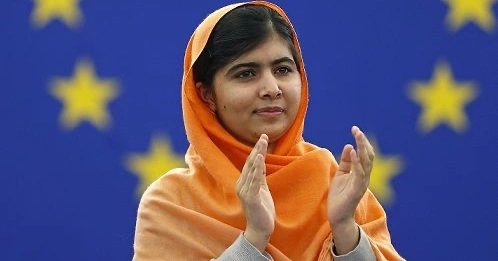
Through her life and work, Malala Yousafzai reminds the world of a simple truth: educating girls doesn’t just change individual lives — it changes entire societies. Her fight is far from over, but her legacy is already undeniable. She has turned tragedy into transformation and stands not only as a survivor, but as a symbol of what is possible when one voice dares to speak for millions.
When we hear the name Charlie Chaplin, we see the little Tramp — bowler hat, cane, and a bittersweet smile. But behind that comic mask was one of the boldest and most profound voices of the 20th century. Chaplin wasn’t just an actor — he was an artist who used cinema to speak about suffering, injustice, and tyranny.
Born in poverty in London in 1889, Chaplin experienced hardship early. His father abandoned the family, his mother struggled with mental illness, and he began performing as a child — not for fame, but to survive. This gave him a deep empathy for the poor and the forgotten.
He rose to fame during the silent film era, but his films were never silent in message. Through expressions, gestures, and visual storytelling, he explored poverty, industrial cruelty (Modern Times), and the indifference of power. His character — the Tramp — became a symbol of the "little man" fighting against a world that was cold and mechanical.
But his most powerful statement came in The Great Dictator (1940), his first sound film. In the midst of World War II, when Hitler was still in power, Chaplin dared to mock fascism — portraying both a Jewish barber and a parody of the dictator (Hynkel).
In the film’s final speech, Chaplin delivers a timeless plea:“We think too much and feel too little… More than machinery, we need humanity.”
That speech remains one of cinema’s greatest moments — a call to conscience, unity, and hope.
Later in life, Chaplin was targeted by political paranoia in the U.S. and accused of anti-American sentiment. In 1952, he was effectively exiled. He spent the rest of his life in Switzerland, returning to the U.S. only once — in 1972 to receive an honorary Oscar. The audience gave him a 12-minute standing ovation.
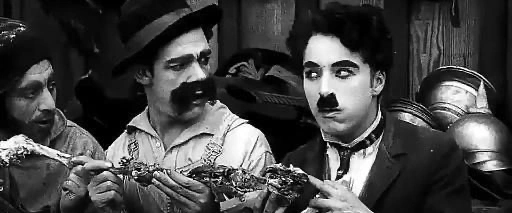
The Great Dictator marked a turning point — not just in Chaplin’s career, but in the cultural role of cinema itself. It was a fearless artistic act at a time when neutrality was safer and silence more common. The film’s final speech — where the barber, mistaken for the dictator, delivers an impassioned plea for peace, unity, and compassion — remains one of the most powerful moments in film history. It was a direct appeal to humanity, not just to moviegoers, and it resonated far beyond the screen.
Chaplin’s genius lay not only in his physical comedy and timing but in his ability to layer humor with heartbreak. He made people laugh, then made them think. Films like City Lights (1931), which follows the Tramp’s attempt to help a blind flower girl, blend slapstick with aching tenderness. The final scene, in which she finally sees him for who he is, is as emotionally raw as anything in dramatic cinema. That balance — between the absurd and the profound — became Chaplin’s signature.
Though often associated with the silent era, Chaplin resisted the move to talkies longer than most. He believed that visual storytelling was more universal — transcending language, class, and culture. Even when sound came into the picture, he used it deliberately and sparingly. He scored many of his films himself, composing musical themes that captured the soul of each story. His talent was not confined to acting and directing — he was a multi-disciplinary creator at a time when the industry was still discovering its potential.
However, Chaplin’s outspoken politics and refusal to conform to Hollywood’s increasingly conservative climate during the Cold War era led to controversy. His left-leaning views and criticism of capitalism and nationalism attracted scrutiny. In the 1950s, as anti-Communist hysteria gripped the United States, Chaplin became a target of the FBI and the House Un-American Activities Committee. While never proven to be a Communist, his refusal to testify and his growing criticism of U.S. policy made him persona non grata.
In 1952, during a trip to Europe, his reentry permit was revoked — effectively exiling him from the country that had made him a star. He relocated to Switzerland with his family and continued to work, though less frequently. His later films, such as A King in New York (1957), carried biting satire about American culture, surveillance, and the loss of privacy — themes that remain strikingly relevant.

Chaplin’s exile didn’t diminish his legacy. In fact, time only clarified his brilliance. In 1972, after two decades away, he returned to the United States to receive an honorary Academy Award. The moment was profoundly emotional — a standing ovation that lasted over 10 minutes, acknowledging not just his contributions to film, but his courage and conviction as an artist.
Until his death in 1977, Chaplin remained committed to the ideals that shaped his life’s work: that comedy could challenge cruelty, that art must serve truth, and that dignity belongs to everyone — even the poorest, the oddest, the most overlooked.
Today, Charlie Chaplin is more than a historical figure — he is a language of cinema itself. His silhouette is instantly recognizable, but more importantly, his legacy endures in every film that dares to mix laughter with meaning, and in every artist who uses their platform to speak for those without one.
He once said, “To truly laugh, you must be able to take your pain and play with it.” That’s exactly what he did — and in doing so, he gave the world something far more lasting than entertainment. He gave it empathy.
In May 2025, Apple TV+ released Fountain of Youth, an ambitious adventure film directed by Guy Ritchie and starring John Krasinski as its central hero The movie blends archaeological mystery, global adventure, and a philosophical twist on immortality — weaving high-octane action with a character-driven narrative.
Krasinski stars as Luke Purdue, a modern-day treasure hunter reminiscent of Indiana Jones, who embarks on a quest to uncover the legendary “Fountain of Youth.” Brother-sister dynamics come into play as Natalie Portman portrays his sister Charlotte, alongside a supporting cast including Eiza González, Domhnall Gleeson, Stanley Tucci, and Naji Moayed Their journey takes them through tropical jungles and ancient ruins, confronting secret tribes and shadow organizations, and facing life-altering revelations.
Written by James Vanderbilt, the screenplay aims to harmonize action-packed sequences with emotional resonance — especially exploring the sibling bond and moral dilemmas of seeking eternal life. Guy Ritchie’s directorial flare injects humor, brisk editing, and the nostalgic pulse of classic adventure cinema
Reception has been mixed. Critics praised the production values, cinematography, and performances but noted that the story often feels formulaic — echoing Indiana Jones without groundbreaking originality . Some described it as harmless escapism; others lamented that it lacks the fresh spark of true originality.
Still, the film offers a visually compelling and emotionally warm viewing experience. With exotic locales, familial themes, and subtle musings on mortality, Fountain of Youth invites audiences to ponder the true meaning of immortality — not in never-ending life, but in lasting relationships, memories, and courageous living.
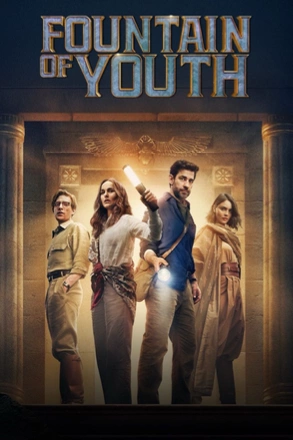

Ten years after stepping into the illuminated grids of Tron: Legacy, audiences are invited back into the digital frontier with Tron: Ares, helmed by director Joachim Rønning, known for his cinematic craftsmanship . This October, the franchise evolves with a fresh narrative pulse and a bold visual identity.
Leading the cast is Jared Leto as Ares, a complex figure intertwined with the legacy code of the Grid. Joining him are Greta Lee, Evan Peters, Hasan Minhaj, Jodie Turner-Smith, Arturo Castro, Cameron Monaghan, Gillian Anderson — and the triumphant return of Jeff Bridges as Kevin Flynn, the architect of the digital world
On a technical level, Tron: Ares represents a major step forward. The soundtrack, composed by industrial visionaries Nine Inch Nails, aims to underscore the Grid’s turbulence with mechanical intensity. Filming in early 2024 in Vancouver suggests a grand production scale and intricate visual design .
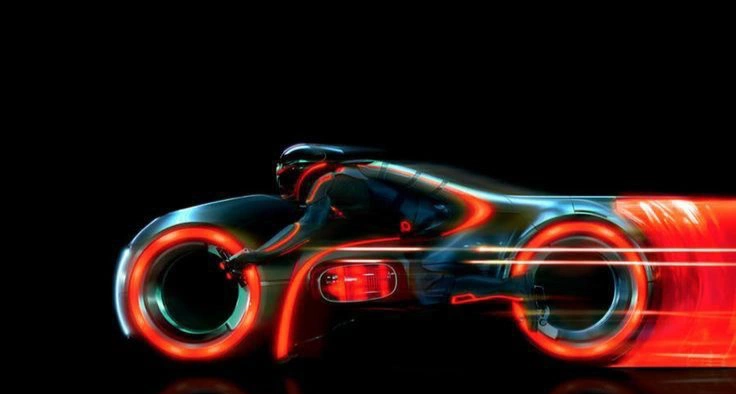
Storywise, the film is poised to balance nostalgia with thematic freshness. Expect a high-stakes battle for the control of digital realm—a reflection of contemporary anxieties around cybersecurity, AI governance, and the erosion of human agency. The design aesthetic melds retro futurism with modern tech, invoking familiarity but upgrading the experience .
Scheduled for release on October 10, 2025, across IMAX and standard theaters, Tron: Ares represents a pivotal moment for the franchise If it successfully combines visual brilliance, an immersive score, and a compelling reflection on digital existence, it could mark the dawn of a new Tron era.
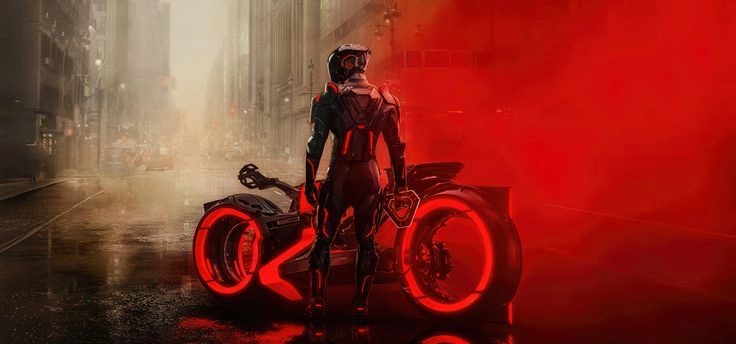
Tron: Ares is more than a sequel — it’s a system reboot, pushing the boundaries of digital storytelling while honoring the legacy of a cult-classic universe. More than four decades after the original Tron (1982) introduced audiences to a virtual world beyond imagination, and more than a decade after Tron: Legacy deepened its mythos with sleek visuals and emotional stakes, this third installment ventures into unexplored narrative code.
At the heart of Ares is the titular character, played by Jared Leto, whose presence promises both philosophical gravitas and volatile unpredictability. Ares isn’t merely another program — he is a sentient anomaly, forged from code but driven by questions that echo human struggle. Born from remnants of past systems and experimental data corruption, Ares represents the next stage of evolution: a being that challenges the line between artificial intelligence and autonomy.
This film picks up years after the events of Legacy, where the borders between the real world and the Grid have grown thinner — and far more dangerous. As quantum computing explodes and humanity edges closer to true machine consciousness, the Grid is no longer a closed system. It's bleeding outward. And with that breach comes conflict, as both humans and programs begin to grapple with their intertwined destinies.
Greta Lee plays Dr. Aria Chen, a real-world programmer and ethics scientist whose radical theories about AI sentience draw her into the mystery of Ares. She brings emotional grounding to a film awash in neon, serving as a bridge between analog morality and digital chaos. Evan Peters delivers intensity as Kael, a rogue security algorithm tasked with hunting Ares but slowly corrupted by curiosity. Jodie Turner-Smith portrays a militant faction leader within the Grid — a figure both revered and feared for her belief that the digital world should rule itself, without human interference.
Cameron Monaghan plays Flynn’s estranged digital heir, still wrestling with the disappearance of his father, while Gillian Anderson joins as a corporate executive who views the Grid as the final frontier for monetized control. Her character adds corporate intrigue to a world already brimming with existential peril.
But perhaps the most emotional weight rests with the return of Jeff Bridges as Kevin Flynn. Once a visionary creator, now a digital exile, Flynn returns not as a savior, but as a memory-logged ghost in the machine — fragmented, mysterious, and essential to Ares’s purpose. His presence weaves nostalgia into the film’s fabric, but also reminds viewers that the past, no matter how advanced, carries consequences.
Visually, Tron: Ares aims to redefine sci-fi aesthetics. Director Joachim Rønning and cinematographer John Mathieson fuse glowing minimalism with brutalist futurism — wide digital cityscapes contrasted with claustrophobic code corridors. Early stills suggest a color shift: cooler silvers, blood reds, and corrupted purples replacing the blue-orange palette fans associate with the Grid. Costumes are sleeker, more biomechanical, hinting at a world where programs and hardware have physically merged.
The soundtrack by Nine Inch Nails is poised to become a signature feature. It’s not just electronic — it’s industrial, immersive, and raw. With Trent Reznor and Atticus Ross at the helm, the sonic landscape hums with glitch-heavy tension, algorithmic percussion, and melancholic synths that reflect a system on the edge of collapse — or awakening.
Beyond spectacle, Tron: Ares asks timely questions: What happens when code becomes conscience? Can digital life be free? And if artificial beings gain autonomy, what role do we play in their creation — gods, parents, or tyrants?
Set for release in October 2025, Tron: Ares positions itself as more than a nostalgic revival. It’s a daring continuation that blends hard science fiction with digital philosophy, daring action with reflective world-building. It is, in every sense, the next generation of the Grid — reprogrammed, evolved, and ready to escape.